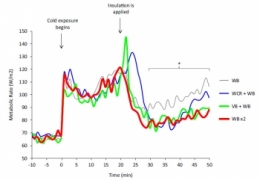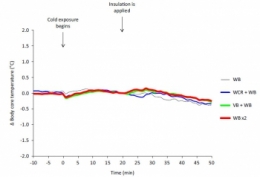Hyporthermie: Il faut envelopper !
28/02/2015
Protection Against Cold in Prehospital Care: Wet Clothing Removal or Addition of a Vapor Barrier
Henriksson O. et All. Prehosp Disaster Med. 2012 Feb;27(1):53-8
Objective.
The purpose of this study was to evaluate the effect of wet clothing removal or the addition of a vapor barrier in shivering subjects exposed to a cold environment with only limited insulation available.
Methods.
Volunteer subjects (n ¼ 8) wearing wet clothing were positioned on a spineboard in a climatic chamber (–18.51C) and subjected to an initial 20 minutes of cooling followed by 30 minutes of 4 different insulation interventions in a crossover design: 1) 1 woolen blanket; 2) vapor barrier plus 1 woolen blanket; 3) wet clothing removal plus 1 woolen blanket; or 4) 2 woolen blankets. Metabolic rate, core body temperature, skin temperature, and heart rate were continuously monitored, and cold discomfort was evaluated at 5-minute intervals.
Results.
Wet clothing removal or the addition of a vapor barrier significantly reduced metabolic rate (mean difference SE; 14 4.7 W/m2 ) and increased skin temperature rewarming (1.01 0.21C). Increasing the insulation rendered a similar effect. There were, however, no significant differences in core body temperature or heart rate among any of the conditions. Cold discomfort (median; interquartile range) was significantly lower with the addition of a vapor barrier (4; 2–4.75) and with 2 woolen blankets (3.5; 1.5–4) compared with 1 woolen blanket alone (5; 3.25–6).
Conclusions.
In protracted rescue scenarios in cold environments with only limited insulation available, wet clothing removal or the use of a vapor barrier is advocated to limit the need for shivering thermogenesis and improve the patient’s condition on admission to the emergency department




Les commentaires sont fermés.